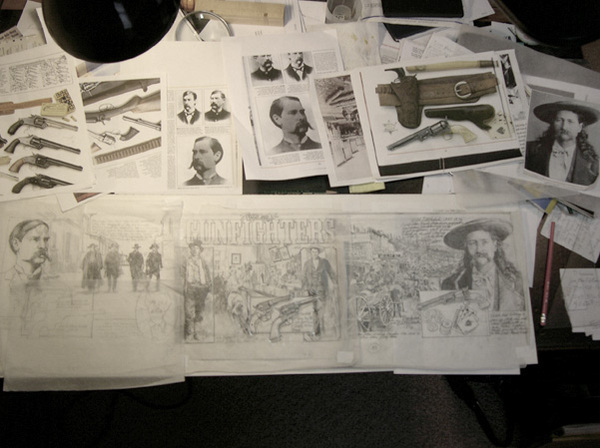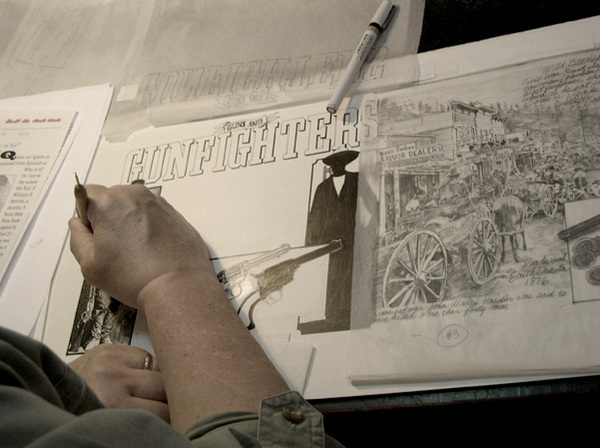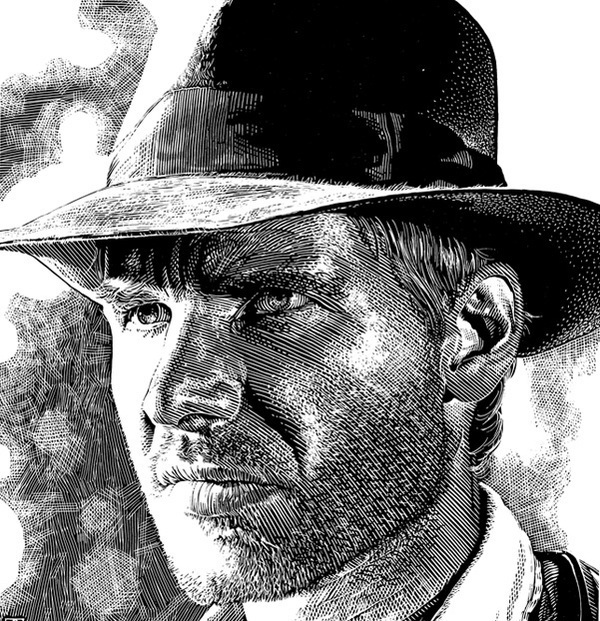
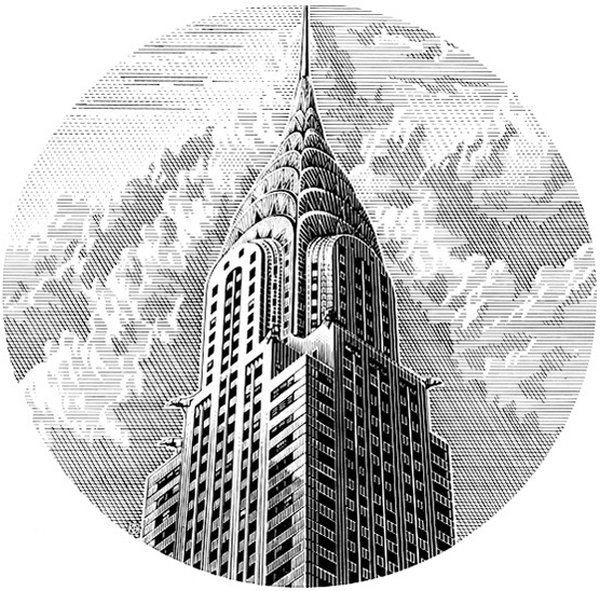



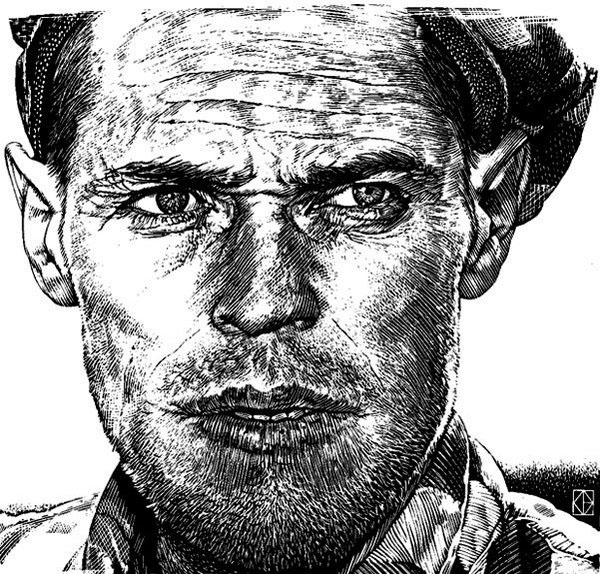

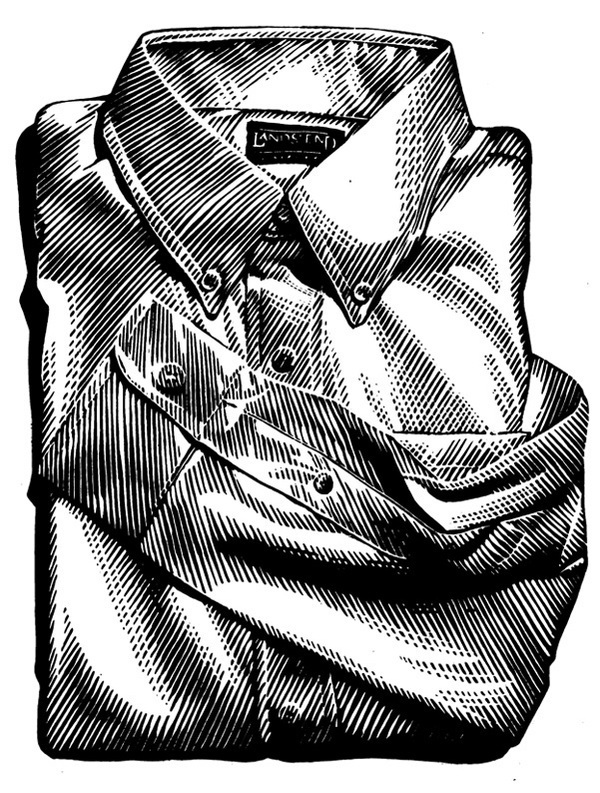
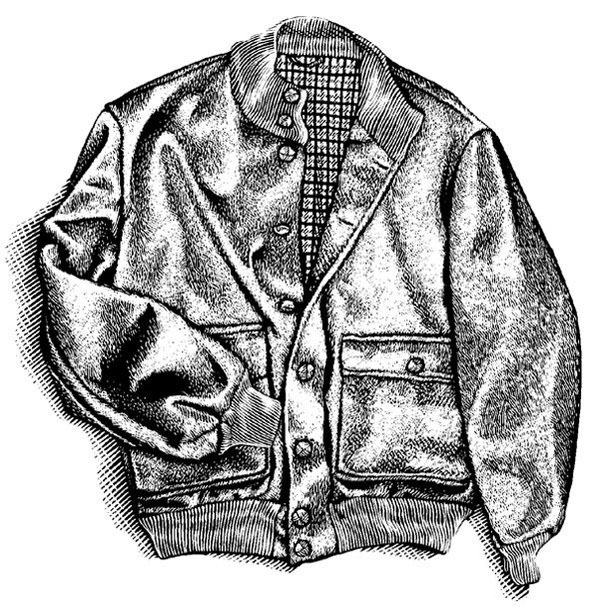



PROCESS
In the beginning stages of an environmental work, I try to find out
as much as possible about the space it will occupy and how people will move through that space. Historic timelines are often involved, and I try to obtain all the visual material that inspired the client. I begin my own research, both visual and textual, immersing myself in the fashions, furnishings, materials, fabrics, crafts, artists of the period, anything and everything that may spark an idea. My wife, a teacher, writer, and family historian, is an invaluable aid in this process.
Once I have all my visual reference, I begin sketches. If there is a timeline, I organize the flow of the visual elements to take the viewer through the progression of years in a clear and easily understood way. Mixing portraits of pivotal or iconic individuals with scenes and architecture from the period, I try to move viewers into the art through varying perspectives, guiding them around the entire composition as they follow the order of the timeline. For example, The Settlement of The West mural flows from right to left, or East to West as the points on a compass, and all the visual elements are composed to move the viewer's eye in the direction followed by western migration over 150 years ago. The Gunfighter mural does the same thing. Both may be viewed either from left to right (most recent to oldest), or right to left. Elements are grouped in sections, inviting viewers into the art, encouraging them to linger in one period or another as they choose.
My sketches are made up of many layers of tissue paper, as I alter sizes and move elements around until I achieve an effective balance and composition. Once I have a rough idea of the overall flow, I render tighter tissues of all the elements, taping them together for final approval by the client. I try to resolve everything in the sketch stage, as scratchboard is not a medium that lends itself to changes at the finished stage. In working into the board I always attempt to convey the look and 'feel' of the surfaces I am rendering. I enjoy trying to convey the differences between metal and flesh, silk and wood, soft and hard, shiny and dull, etc.
The line work of the scratchboard, usually done in black or sepia, becomes the foundation for the color, which is applied at the final stages of finishing the art. I often tend to mix media throughout the entire process, scratching, painting, fading back and 'aging' with steel wool, drawing and inking, pasting in type, even resorting to collage at times. When I'm finally satisfied, the finished piece is brushed with clear acrylic.
In the beginning stages of an environmental work, I try to find out
as much as possible about the space it will occupy and how people will move through that space. Historic timelines are often involved, and I try to obtain all the visual material that inspired the client. I begin my own research, both visual and textual, immersing myself in the fashions, furnishings, materials, fabrics, crafts, artists of the period, anything and everything that may spark an idea. My wife, a teacher, writer, and family historian, is an invaluable aid in this process.
Once I have all my visual reference, I begin sketches. If there is a timeline, I organize the flow of the visual elements to take the viewer through the progression of years in a clear and easily understood way. Mixing portraits of pivotal or iconic individuals with scenes and architecture from the period, I try to move viewers into the art through varying perspectives, guiding them around the entire composition as they follow the order of the timeline. For example, The Settlement of The West mural flows from right to left, or East to West as the points on a compass, and all the visual elements are composed to move the viewer's eye in the direction followed by western migration over 150 years ago. The Gunfighter mural does the same thing. Both may be viewed either from left to right (most recent to oldest), or right to left. Elements are grouped in sections, inviting viewers into the art, encouraging them to linger in one period or another as they choose.
My sketches are made up of many layers of tissue paper, as I alter sizes and move elements around until I achieve an effective balance and composition. Once I have a rough idea of the overall flow, I render tighter tissues of all the elements, taping them together for final approval by the client. I try to resolve everything in the sketch stage, as scratchboard is not a medium that lends itself to changes at the finished stage. In working into the board I always attempt to convey the look and 'feel' of the surfaces I am rendering. I enjoy trying to convey the differences between metal and flesh, silk and wood, soft and hard, shiny and dull, etc.
The line work of the scratchboard, usually done in black or sepia, becomes the foundation for the color, which is applied at the final stages of finishing the art. I often tend to mix media throughout the entire process, scratching, painting, fading back and 'aging' with steel wool, drawing and inking, pasting in type, even resorting to collage at times. When I'm finally satisfied, the finished piece is brushed with clear acrylic.
